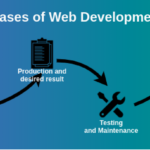
Search Engine Optimization (SEO) is essential for improving your website’s visibility on search engines like Google. By following fundamental SEO practices, you can attract more organic traffic and enhance your online presence. Here’s a step-by-step guide to optimizing your website for search engines.
1. Conduct Keyword Research
Identifying the right keywords is the foundation of effective SEO. Use tools like Google Keyword Planner, Ahrefs, or SEMrush to discover relevant keywords related to your business. Focus on keywords that have a good search volume and low competition. Consider long-tail keywords as they often attract more targeted traffic.
2. Optimize On-Page Elements
On-page SEO refers to optimizing individual pages on your website. Here are key elements to focus on:
- Title Tags: Include your primary keyword and keep it under 60 characters for better visibility in search results.
- Meta Descriptions: Write compelling meta descriptions (150-160 characters) that summarize the page content and include keywords. This helps improve click-through rates.
- Header Tags: Use H1 tags for main titles and H2/H3 tags for subheadings. Include relevant keywords naturally in these headers.
- Content: Create high-quality, informative, and engaging content. Ensure your primary and related keywords are naturally integrated throughout the text.
3. Improve Website Structure and Navigation
A well-organized website structure is crucial for both user experience and SEO. Use a logical hierarchy, clear menus, and internal linking to guide users and search engines through your site. Ensure that your URLs are concise and include relevant keywords.
4. Mobile Optimization
With the increasing use of mobile devices, Google prioritizes mobile-friendly websites in its rankings. Ensure your website is responsive, meaning it adapts seamlessly to different screen sizes. Use Google’s Mobile-Friendly Test tool to check your site’s mobile compatibility.
5. Increase Page Speed
Website loading speed is a critical factor for SEO. A slow website can lead to higher bounce rates and negatively impact user experience. Use tools like Google PageSpeed Insights or GTmetrix to analyze your site’s speed and implement recommendations, such as optimizing images, leveraging browser caching, and reducing server response time.
6. Utilize Alt Text for Images
Search engines cannot interpret images, so using alt text is essential. Provide descriptive alt text for all images, incorporating relevant keywords where appropriate. This not only helps with SEO but also improves accessibility for users with disabilities.
7. Build Quality Backlinks
Backlinks from reputable websites enhance your site’s authority and credibility. Focus on building relationships within your industry to gain high-quality backlinks. Guest blogging, participating in forums, and creating shareable content can help you earn valuable backlinks.
8. Create a Sitemap
A sitemap helps search engines crawl and index your website more efficiently. Create an XML sitemap and submit it to Google Search Console. This ensures that all your pages are discoverable and helps search engines understand your site structure.
9. Monitor and Analyze Performance
Use tools like Google Analytics and Google Search Console to track your website’s performance. Monitor key metrics such as organic traffic, bounce rate, and conversion rates. Analyzing this data will help you identify areas for improvement and adjust your SEO strategy accordingly.
10. Stay Updated with SEO Trends
SEO is an ever-evolving field, with search engines frequently updating their algorithms. Stay informed about the latest SEO trends and best practices by following reputable SEO blogs, forums, and industry news. This will help you adapt your strategy and maintain your rankings.
Conclusion
Optimizing your website for search engines is an ongoing process that requires attention to detail and a commitment to best practices. By conducting thorough keyword research, optimizing on-page elements, improving site structure, and staying updated with SEO trends, you can enhance your website’s visibility and attract more organic traffic.






